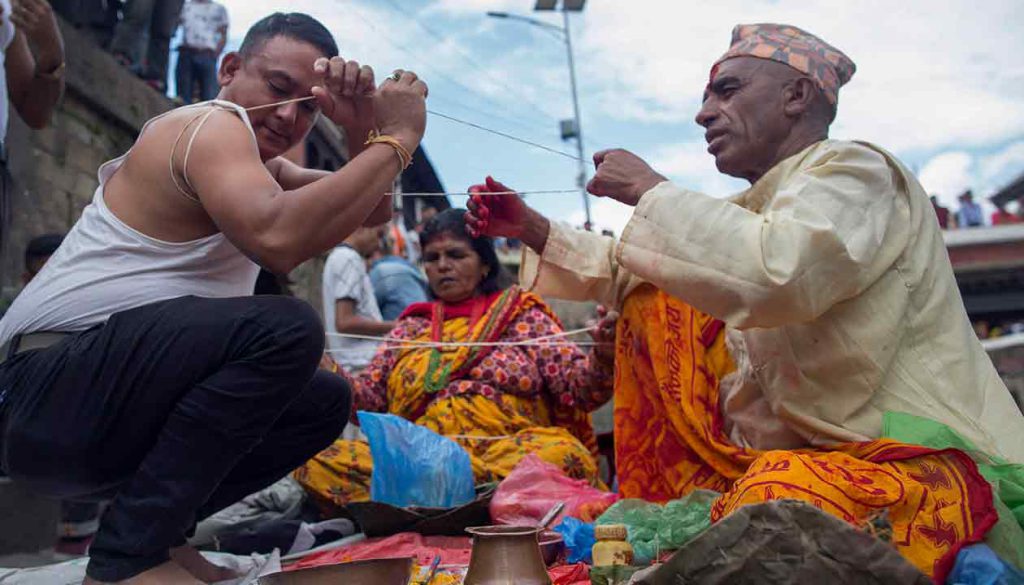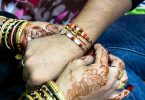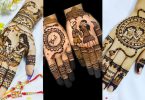Many call India the land of festivals, as each month people in different corners celebrate various festivals due to diversity in religion, cultures, etc. Raksha Bandhan is one such festival that many wait eagerly for and is celebrated with great enthusiasm and pomp. Although it’s a Hindu festival, those of different faiths celebrate this occasion zealously. Not just India, but Raksha Bandhan is celebrated in many other countries.
Nepal, one country that shares its borders with India, celebrates Raksha Bandhan and also Janai Purnima on the same day. Let’s find out how the people of Nepal celebrate this day!
Janai Purnima

In Nepal, people celebrate Janai Purnima, which falls on the same day as Raksha Bandhan. It’s an auspicious occasion of the utmost importance for Hindu men, especially Brahmins, and Chettris. Janai Purnima, like Rakshabandhan, is celebrated on the full moon day, which means Purnima, in the month of Shravan of the Hindu calendar.
Janai Purnima ritual includes changing sacred threads called Janai by the Hindu men. A janai consists of six cotton threads, of which three are dedicated to Lord Vishnu, Brahma, and Maheswar. The other three threads signify karma, worship, and knowledge.
The Janai threads are revered as a symbol of speech, mind, and body, and wearing the thread signifies a man having control over these three elements. The Janai thread is worn by Hindu men diagonally from the left shoulder to the right waist. Men, while wearing the threads, are prohibited from doing certain things. If the thread gets untidy or disrespected, if anything goes against the thread, it must be changed. Regardless, changing the sacred Janai thread is a must on every Raksha Bandhan.
How is Janai Purnima celebrated in Nepal?

A day before the Janai Purnima, the men wearing the sacred janai threads must clean themselves. They cut their hair and shave. They keep their body clean by doing a partial fast by taking only one meal and having no onion, garlic, or meat. In Hindu celebrations and rituals, only Sattvic food is allowed.
On Purnima, the men wake up early and take a bath. Then, they visit the nearby temple and prepare for the Janai changing rituals. A pandit or a priest recites the holy mantras and the stories related to the rituals. Thousands of pilgrims visit a holy lake called Gosaikunda associated with Lord Shiva.
As per a legend, Lord Shiva had saved the world from dying by keeping all the poison within his throat. The poison was so painful that even Lord Shiva couldn’t handle it and he went in the Gosaikunda Lake to cook down. And this is how the lake became holy, as it is now known as the resting place of Lord Shiva.
The pilgrims dip in the holy waters three times and then change their Janai threads. Some people also take dips in a lake or river nearby them.
In cities, people call their home priests for the Janai changing ceremony. The priest recites the holy chants and stories from a holy book that purifies the new threads. The men wear the new Janai threads diagonally from neck to chest. Families then donate food and money to the priests.
Kwati Punhi or Kwati Purnima
Janai Purnima is also sometimes called Kwati Purnima or Kwati Punhi. Those who don’t wear Janai wear a sacred thread, ‘doro,’ on their wrist. People get up, bathe early in the morning, and get doros or threads tied around their wrists by priests. The doro threads are believed to bring good luck to the wearer and must be removed on Lakshmi Puja Day and tied to a cow’s tail. According to Hindu beliefs, when the wearer of the doro dies, he will be guided to heaven through the river Baitarni by clinging to a cow’s tail.
After tying the thread, the Newars of the Kathmandu Valley celebrate Kwati Punhu or Gunhi Punhu by preparing a special dish called ‘Kwati’ at their home. A kwati is a kind of soup prepared with a combination of 9 to 12 types of sprouts and beans. The beans or sprouts are soaked in water a day before then on Purnima and are cooked with water and the essential spices.
Raksha Bandhan celebrations in Nepal
People in the north of Nepal and other corners also celebrate Raksha Bandhan, which falls on the same day as Janai Purnima. The celebrations are very similar to Bhai Tika or Bhai Dooj. Raksha means ‘protection,’ and Bandhan means ‘tie,’ meaning a bond of protection.’ On this day, the sisters keep a fast till they tie a rakhi to their brother. The sisters, far away, send rakhi to Nepal, where their brothers are, and convey their love.
Families wake up early and prepare for the Raksha Bandhan celebrations. Sisters prepare a puja thali. Sisters then apply a tika on their brothers’ foreheads and tie the rakhi around their wrists. While tying the rakhis, the sisters pray to god for their brothers’ good health and well-being. On the other hand, brothers promise to always protect their sisters and give a return rakhi gift to sisters.
And there’s your answer to the question, how is Raksha Bandhan celebrated in Nepal? People of different ethnic groups in Nepal celebrate Raksha Bandhan and Janai Purnima, both falling on the same day. A janai is a thread worn by a Hindu man which has to be changed every year on the same festival, while Raksha Bandhan is celebrated by tying a rakhi thread to a brother by his sister. Both festivals are of importance in Nepal.









